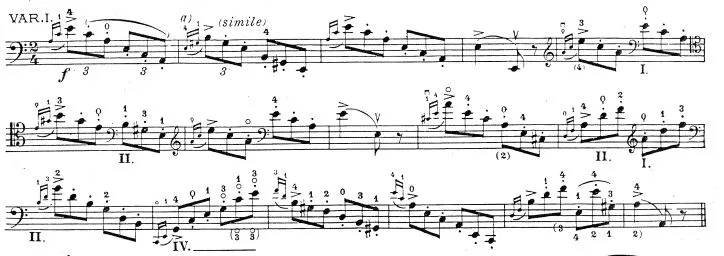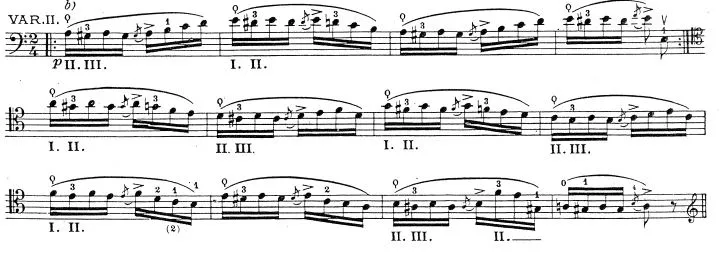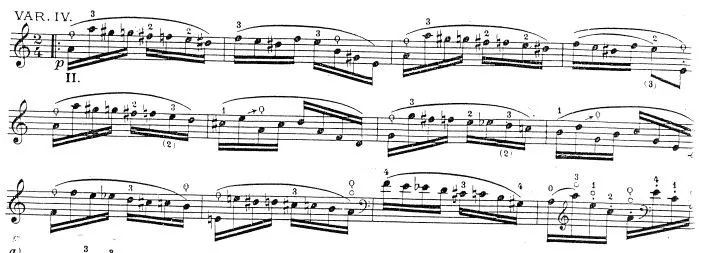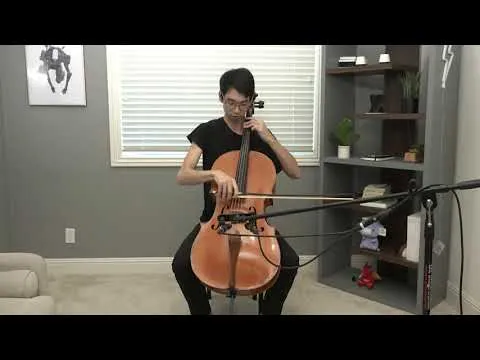Niccolò Paganini, Caprice No. 24, Op. 1
Luigi Silva transcription for cello
Caprice No. 24 is the last caprice in a set of caprices written by Paganini for solo violin. It is considered one of the most difficult pieces on the violin due to the range of technical dexterity required to pull off a successful performance. There are 11 variations and a Finale based off the main theme, each variation focuses on a unique technical facet ranging from flying staccato to left hand pizzicato. It is not often played on the cello but thanks to a lovely transcription from Luigi Silva, cellist can now embark on a journey of pure frustration to play this fiendishly difficult piece.
Abstract
For the longest time I thought that the most difficult aspect of this work was the double stop passages. I was extremely wrong. Its not the passages themselves that are the most difficult but the transitions between the passages that cause the most grief. After the initial week of despair, I started enjoying the slow process of working on such a piece. Progress was oftentimes minimal to the point of being unnoticeable but there was a sense of satisfaction in the time that I spent grinding out passages. I wanted to share some key points and technical challenges that arose in each variation.
Theme
I was honestly a little stumped on what I wanted from the opening theme. Its honestly such beautiful music but its marked quasi Presto. I ended up taking it quite slowly to give it a more melodic touch but yet still maintaining a sense of presence by not forgoing the energy created by the dotted rhythm.

Variation 1
Violinist get to show off their brilliant flying staccato in this passage but for cellist its hard as fuck. The gravity of the bow's momentum lifted from the first staccato doesn't work as well on the cello as it does on the violin. I tried to recreate it on the cello by bouncing in the same area of the bow with a small bite at the beginning of each note. The bite is enabled by a small pulling motion initiated by the the first two fingers in my bow-hand.

Variation 2
The original transcription for cello doesn't include the top grace note in the middle of each bar. I added them back in but it turned out to be alot more difficult than I imagined and although I hit them all (I think) it turned out rather messy. ¯_(ツ)_/¯

Variation 3
Octaves. And they have to sound beautiful cause its such a beautiful melody. But its never in tune so you sit in a corner and cry... So approaching this passage was not fun but thankfully I had some help on how to practice octaves. This interviewwith Tim Eddy gives a very thoughtful and methodical approach to practicing octaves and cultivating thumb independence. (He studied under Silva who transcribed these pieces)

Variation 4
I had a lot of trouble having relaxed fingers ready to spin away in halfsteps after variation 3. I spent a lot of time working slowly with a metronome to get a precise yet smooth flow of motion.

Variation 5
Octaves but with leaps this time. I cheated in this variation by playing it as straight octaves. I tried for so long to make the original version sound natural on the cello but I eventually gave up because everything else was already too hard.

Variation 6
By far the passage I spent the most time on. I had to get it to a point of natural fluidity and it took many hours to get there. All I can say is slow, thoughtful practice is your best friend here. Being aware of how each of your muscles are working in harmony with each other in relation to the fingerboard is crucial to making it sound fluid.

Variation 7
I wanted this to be as clean as possible, with no audible slides. Don't really have much else to add, just took a bit of practicing.

Variation 8
The original violin bowing has all the chords slurred over. I tried it a couple times on the cello but I just couldn't get all the strings to sound, hence losing out on a couple of the voices. I ended up just doing all down bows to catch all 3 strings at the same time.

Variation 9
No one ever teaches you how to left hand pizzicato. Why? cause its for losers thats why. Im joking, its because there aren't any pieces that contain such a technique in the standard cello repertoire. My left hand fingers were raw from practicing this variation, trying to get actual volume from the pizz was even more difficult. I'm just going to say this now. I raised the volume for this variation in post to hear the pizz more clearly.

Variation 10
Its not harmonics in the original violin version but I liked the idea of harmonics in this variation because it completed the journey of conventional cello techniques. My cello is extremely fickle with harmonics and it often doesn't sound (maybe I just can't play harmonics) so I would often miss notes or just play wrong notes altogether.

Variation 11 and Finale
Take a look at it. Look at all those fast notes going up and down. My fingers would often be extremely tired by this point and I would just straight up bomb the final runs. I started working out points of relief where I could take a little time to quickly reset my left hand. The Finale required a lot of slow practice in order to get a more comfortable handle on the quick shifting required in the arpeggios. Another crucial aspect to playing these passages is to maintain a loose bow arm that doesn't randomly fluctuate, allowing the precision of the left hand to be heard clearly.

